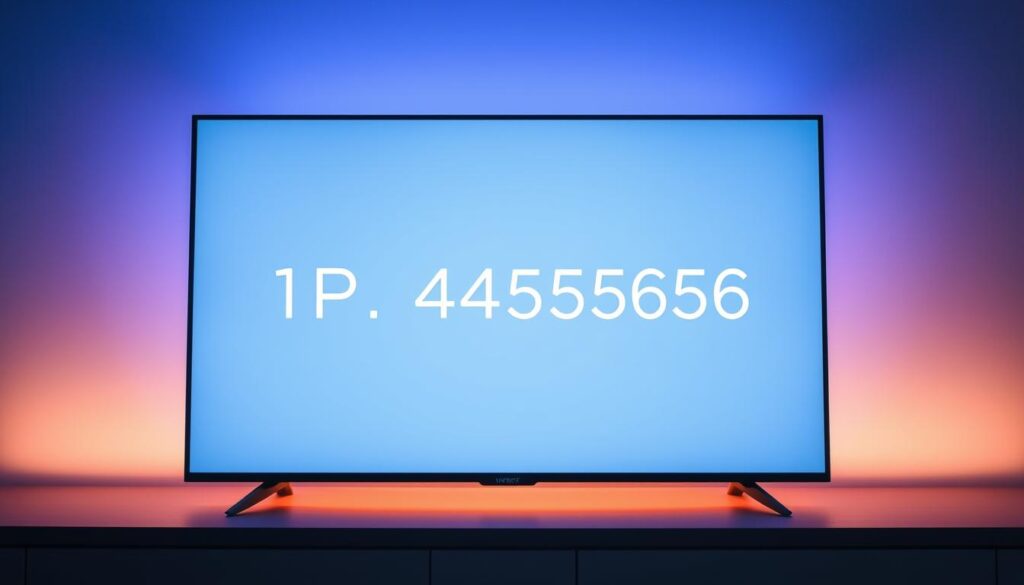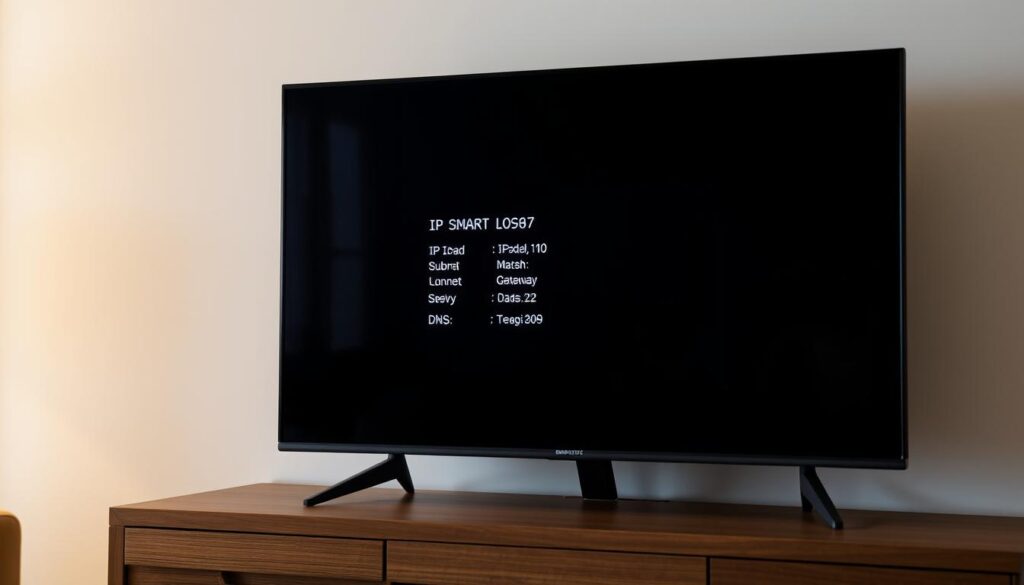Understanding your IP smart TV’s network details can transform your streaming experience. An IP address serves as a digital fingerprint for your smart television internet connectivity, enabling seamless communication between your device and online services.
When you know how to locate your IP address, you unlock powerful troubleshooting capabilities. Smart TV users can quickly resolve connection issues, optimize streaming performance, and enhance their overall viewing experience by mastering this essential technical skill.
Learning to find your smart TV’s IP address might seem complex, but with the right guidance, you can easily navigate your device’s network settings. Whether you own an Android, Samsung, or LG smart TV, this comprehensive guide will walk you through each step of discovering your unique network identifier.
For those interested in advanced streaming solutions, exploring services like SOLID IPTV can provide additional insights into network configuration and entertainment options.
Key Takeaways
- IP addresses are unique identifiers for network devices
- Understanding your smart TV’s IP helps troubleshoot connectivity
- Different TV brands have varied methods for finding IP addresses
- Network settings are crucial for optimal streaming performance
- Knowing your IP address enhances device management
Understanding What an IP Smart TV Is
Technology has transformed home entertainment, and web-enabled TV stands at the forefront of this revolution. Internet protocol television represents a significant leap from traditional television viewing, offering viewers unprecedented connectivity and interactive experiences.
An IP smart TV uses internet protocol to deliver television content through network connections. Unlike conventional televisions, these devices connect directly to the internet, enabling a range of advanced features that expand your viewing options.
Defining Internet Protocol Television
An internet protocol television is a digital television broadcasting system that transmits video content using internet networks. These smart TVs leverage internet connectivity to provide:
- Streaming service access
- On-demand content
- Interactive applications
- Personalized viewing experiences
Benefits of Web-Enabled TV Technology
Choosing an IP smart TV offers multiple advantages for modern entertainment consumers:
| Feature | Benefit |
|---|---|
| Streaming Integration | Direct access to Netflix, Hulu, Disney+ |
| App Compatibility | Download entertainment and utility apps |
| Content Customization | Personalized recommendations |
Your web-enabled TV transforms traditional viewing into an interactive, connected experience that adapts to your preferences and lifestyle.
Why You Need to Know Your IP Address
Understanding your connected television’s IP address is more critical than most people realize. Your smart TV’s IP address serves as a digital passport, enabling seamless communication between your device and the internet. It’s the unique identifier that allows streaming services, apps, and network connections to interact with your connected television.
Knowing your IP address for smart TV can help you solve various technical challenges and enhance your viewing experience. Here are key reasons why this information is crucial:
- Troubleshoot network connectivity issues
- Configure remote access settings
- Optimize streaming performance
- Protect your online privacy
Importance of IP Address in Streaming
Your IP address plays a vital role in streaming content. It determines your geographical location, which impacts content availability. Streaming platforms use this information to:
- Verify regional content restrictions
- Personalize recommended content
- Manage bandwidth allocation
Troubleshooting Connectivity Issues
When network problems arise, your IP address becomes a diagnostic tool. Network administrators and tech support can use this information to:
| Issue | Resolution Strategy |
|---|---|
| Intermittent Connection | Identify network interference |
| Slow Streaming | Diagnose bandwidth limitations |
| App Crashes | Check network compatibility |
Pro tip: Regularly checking your IP address can help you stay ahead of potential connectivity challenges and ensure a smooth streaming experience.
Steps to Find Your IP Smart TV Address
Discovering your network-connected television’s IP address can streamline your streaming TV setup and help resolve connectivity issues. Different smart TV brands have unique methods for locating this essential network information.
Before diving into specific instructions, understand that your IP address is crucial for managing your network-connected television’s internet connection. The process varies slightly depending on your TV’s operating system.
Finding IP Address on Android TV
Android TV users can locate their IP address through these straightforward steps:
- Press the Home button on your remote
- Navigate to Settings
- Select Network & Internet
- Choose Wi-Fi or Ethernet
- Your IP address will be displayed in the connection details
IP Address Discovery on Samsung Smart TV
Samsung smart TVs offer a simple method to find network information:
- Click the Home button
- Go to Settings
- Select General
- Click Network
- View Network Status to see your IP address
LG Smart TV IP Address Retrieval
For LG smart TV owners, follow these steps to locate your network details:
- Press the Settings button on your remote
- Select Network
- Choose Connection Type
- Check Wired or Wireless connection
- Your IP address will be displayed in the network information
Remember that your specific TV model might have slight variations in these steps. When in doubt, consult your device’s user manual or manufacturer’s support website for precise instructions.
Accessing the Menu Settings
Navigating your smart TV’s menu settings can seem challenging, but with the right guidance, you’ll quickly become an expert in smart TV internet configuration. Understanding your TV’s interface is crucial for accessing TV IP settings and managing your device effectively.
Most modern smart TVs share similar navigation patterns. Your remote control is the primary tool for exploring the home screen and accessing various settings. Here are some key steps to help you move through your TV’s menu:
- Press the Home button on your remote
- Look for the gear or Settings icon
- Use directional arrows to navigate
- Select the desired menu option
Understanding Your TV’s Home Screen
Smart TV interfaces vary by brand, but most follow a similar layout. You’ll typically see rows of apps, streaming services, and system settings. The home screen is designed to be intuitive, allowing quick access to your favorite content and configuration options.
Locating the Settings Menu
Finding the settings menu is straightforward. Look for icons that resemble:
| Icon Type | Typical Appearance | Location |
|---|---|---|
| Gear/Cog | ⚙️ Wheel-like symbol | Top right or bottom of screen |
| Wrench | 🔧 Tool icon | System configuration section |
| Three Dots | More options menu | Side or bottom menu |
“Mastering your smart TV’s menu is the first step to becoming a streaming pro!” – Tech Experts
Each brand might have slight variations, but these general guidelines will help you confidently navigate your smart TV’s settings and configure your network connections.
Checking Network Connection Details
Understanding your network-connected television’s connection status is crucial for optimal streaming performance. Your ip smart tv relies on a stable internet connection to deliver seamless entertainment experiences.
To effectively check your network connection, follow these straightforward steps:
- Navigate to your TV’s main settings menu
- Select the network or connection section
- Review your current network status
Viewing Network Status
When examining your network connection, pay attention to key indicators such as:
- Signal strength
- Connection type (Wi-Fi or Ethernet)
- Internet speed
Finding the IP Address
Locating your IP address is simple. Most IPTV services require this information for setup and troubleshooting. Look for a section labeled “Network Information” or “Connection Details” within your TV’s settings.
If you’re struggling to find your IP address, consider these alternative methods:
- Check your router’s admin panel
- Use an online IP lookup tool
- Contact your internet service provider
Pro tip: Write down your IP address for future reference, as it can be helpful when configuring streaming services or resolving connectivity issues.
Using Your Remote Control Effectively
Mastering your smart television internet connectivity starts with understanding your remote control. Modern connected television remotes are powerful tools that can simplify network settings and access. Knowing the right buttons can transform your viewing experience and make navigating complex menus much easier.
Key Buttons for Quick Network Access
Most smart TV remotes come with dedicated buttons that streamline your navigation. Here are the essential buttons for quick network settings:
- Home Button: Instantly returns to the main screen
- Settings/Menu Button: Direct access to system configurations
- Quick Settings Shortcut: Provides rapid network diagnostic tools
Setting Custom Remote Commands
Customizing your remote can significantly improve your smart television internet connectivity. Many modern TVs allow you to program specific button combinations for faster access to network settings.
| Remote Button | Typical Function | Custom Configuration Potential |
|---|---|---|
| Home Button | Main Screen Access | Network Settings Shortcut |
| Settings Button | System Configuration | IP Address Quick View |
| Info/Guide Button | Program Information | Connection Status Check |
Learning these shortcuts can save you time and reduce frustration when managing your connected television’s network settings. Practice using these buttons to become more efficient with your smart TV’s controls.
Impact of IP Address on Streaming Services
Your internet protocol television (IPTV) experience depends greatly on how IP addresses interact with streaming TV setup configurations. Every smart TV connects to the internet through a unique IP address, which plays a crucial role in determining your viewing options.
IP addresses serve as digital passports for your streaming content. They reveal critical information about your geographic location, directly influencing what you can watch online.
Channel Assignment Mechanisms
Streaming platforms use IP addresses to manage content distribution through several key methods:
- Geographical content filtering
- Licensing restrictions
- Regional broadcasting rights
Regional Content Availability
Your IP address determines which content libraries you can access. Different regions have unique streaming catalogs based on local licensing agreements.
For example, a viewer in New York might see different shows compared to someone in California, all determined by their specific IP address and regional broadcasting rights.
Understanding your IP address helps optimize your streaming TV setup and maximize content accessibility.
By recognizing how internet protocol television works, you can better navigate the complex world of digital streaming and make the most of your entertainment options.
Tips for Optimizing Your IP Smart TV Experience
Maximizing the performance of your web-enabled TV requires strategic network configuration and proactive maintenance. Your smart TV internet configuration plays a crucial role in delivering smooth, high-quality streaming experiences.
Effective management of your smart TV involves several key strategies:
- Optimize your home network setup
- Select the most reliable connection type
- Keep software current
- Monitor network performance regularly
Adjusting Your Network Settings
Your network configuration directly impacts streaming quality. Consider these recommendations for optimal smart TV internet configuration:
| Network Setting | Recommended Action |
|---|---|
| Connection Type | Prefer wired Ethernet over Wi-Fi when possible |
| Router Placement | Position near TV for stronger signal |
| Bandwidth | Ensure minimum 25 Mbps for HD streaming |
Regularly Updating Your Apps
Software updates are critical for maintaining your web-enabled TV’s performance. Routine updates patch security vulnerabilities and improve app functionality. Set your smart TV to automatic updates or check for new versions monthly.
By implementing these optimization techniques, you’ll ensure a seamless, secure, and high-quality streaming experience on your smart TV.
Recommended IPTV Providers for Smart TVs
Exploring the world of internet protocol television (IP smart TV) can transform your home entertainment experience. The right IPTV provider can unlock a universe of content, offering more flexibility and variety than traditional cable services.
When selecting an IPTV service for your smart TV, several top providers stand out for their exceptional features and reliability:
Overview of IPTV Services
Internet protocol television (IPTV) delivers television content through internet networks, providing viewers with unprecedented streaming capabilities. These services offer:
- On-demand content
- Multi-device compatibility
- Extensive channel selections
- High-definition streaming
SOLID IPTV Features
SOLID IPTV delivers a robust streaming experience with:
- Over 5,000 live channels
- 4K streaming options
- 24/7 customer support
- Electronic program guide (EPG)
IPTVVUK Features
IPTVVUK specializes in international content, offering:
- UK and European channel packages
- Competitive pricing
- Stable streaming connections
- Multiple device connections
G-IPTV Features
G-IPTV provides a comprehensive streaming solution with:
- Global channel lineup
- Affordable subscription plans
- High-quality video streams
- Reliable server infrastructure
Choosing the right IP smart TV service depends on your specific entertainment needs and budget. Each provider offers unique advantages to enhance your viewing experience.
Troubleshooting Common Issues with Smart TVs
Smart TV owners occasionally encounter technical challenges that can disrupt their viewing experience. Understanding how to diagnose and resolve these issues can save you time and frustration when managing your TV IP settings and network connectivity.
When experiencing connection problems with your smart TV, several key factors might be impacting your device’s performance. Your IP address for smart TV plays a crucial role in maintaining stable network connections.
Common Connection Challenges
- Weak Wi-Fi signal strength
- Incorrect network configuration
- Outdated firmware
- Router compatibility issues
Resolving Network Connectivity Problems
To address network issues, start by checking your TV’s network settings. Verify that your TV IP settings are correctly configured and that your router is functioning properly.
| Issue | Potential Solution |
|---|---|
| Intermittent Connection | Restart router and TV |
| No Internet Access | Check cable connections |
| Slow Streaming | Move closer to router |
App Performance and Crashes
App instability can stem from various sources. Clear your app cache regularly and ensure you’re using the latest firmware updates to minimize unexpected crashes.
By following these troubleshooting steps, you can quickly resolve most smart TV connectivity and performance issues, ensuring a smoother streaming experience.
Enjoying a Seamless Streaming Experience
Optimizing your streaming TV setup requires strategic planning for smart television internet connectivity. Your viewing experience depends on selecting the right network configuration and implementing effective performance strategies. A well-designed approach can dramatically improve your streaming quality and reduce potential interruptions.
Wired connections typically provide more stable internet performance compared to Wi-Fi networks. Ethernet cables deliver consistent bandwidth and lower latency, which is crucial for uninterrupted streaming. When setting up your smart TV, consider connecting directly to your router using a high-quality cable to maximize streaming reliability.
For enhanced security during your streaming sessions, consider implementing a VPN and enabling network firewalls. These tools protect your digital privacy while maintaining smooth connectivity. You can explore advanced streaming TV setup techniques that ensure both performance and protection for your entertainment experience.
Managing bandwidth across multiple devices becomes essential in households with numerous internet-connected products. Prioritize your smart television’s connection by adjusting router settings and scheduling high-bandwidth activities during off-peak hours. These strategic adjustments will help you achieve a seamless, buffer-free streaming experience.




